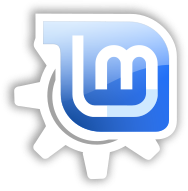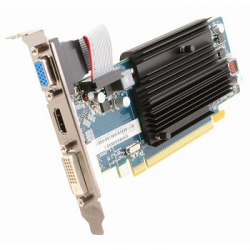 Until a week ago I stuck to LinuxMint 13 based on Ubuntu 12.04 LTS. That still is a well maintained distro. However, applications increasingly move on to more recent versions, which gradually caused conflicts and annoyances. Over a year ago I already had tried to upgrade to LinuxMint 17. But then I ran into trouble with my dual monitor configuration. I am not sure if it was due to a slightly outdated video card, or to failing video drivers, but I was simply unable to configure my monitors properly.
Until a week ago I stuck to LinuxMint 13 based on Ubuntu 12.04 LTS. That still is a well maintained distro. However, applications increasingly move on to more recent versions, which gradually caused conflicts and annoyances. Over a year ago I already had tried to upgrade to LinuxMint 17. But then I ran into trouble with my dual monitor configuration. I am not sure if it was due to a slightly outdated video card, or to failing video drivers, but I was simply unable to configure my monitors properly.
Now, with hesitation, I upgraded again, this time to LinuxMint 17.03 with KDE 4.14. And lo and behold! it all worked. The open-source radeon driver still was not able to assign identical resolutions to both monitors, but AMD’s own (proprietary) fglrx driver did so out-of-the-box. So now I can enjoy all blessings of an up-to-date system, which also starts much faster than before.
Graphics
 My old video card was based on the Radeon HD5450 GPU, which was with the first series to have AMD Eyefinity technology on board, enabling two monitors to be connected to one video card. That is what I had: two (value) Asus VE198 VGA monitors, one connected to the VGA port, and one connected to the DVI port through a DVI-to-VGA adapter.
My old video card was based on the Radeon HD5450 GPU, which was with the first series to have AMD Eyefinity technology on board, enabling two monitors to be connected to one video card. That is what I had: two (value) Asus VE198 VGA monitors, one connected to the VGA port, and one connected to the DVI port through a DVI-to-VGA adapter.
Now I replaced that video card by a newer one with a Radeon HD6450 GPU. It is twice as fast and also has a more recent version of Eyefinity. I had some trouble connecting the DVI port to the VGA cable, since my old adapter did not fit anymore. Well, now I know the difference between DVI-I and DVI-D. In the end I used a HDMI-to-VGA (active) adapter to connect the second VGA monitor. That only worked after I found out the adapter desperately needed its own 5V power. A wee USB cable worked miracles, and the AMD Catalyst Control Centre finished the job. This time I could simply install the AMD driver from the LinuxMint repositories, without the bother I had before. Finally, it was a bit of a puzzle to set the colours for both VGA monitors to about the same palette, but by now I am really happy.
Applications
Basically everything worked as before. With a few minor or major exceptions.
Synaptic has always been my favourite package manager. However, in LinuxMint 17.03 it can no longer be used it for updating packages. For that purpose you need to rely on MintUpdate. In the past I got annoyed with that tool, but now it seems to have improved sufficiently. So fine.
Klipper, the indispensable KDE clipboard tool, should sit in the system tray right from the system start. But it did not, and I could not find the settings to make it do so. I had forgotten the somehow silly place where that option is hidden. First you start Klipper, then you right-click on the system tray icon, you choose ‘Quit’ – et voilà! a dialogue appears giving you the option to start Klipper at boot time.
LibreOffice will by default install version 5.0.3 from the main repositories. But that really bothered me. I did not succeed in teaching it to use the normal KDE dialogue boxes, so I had to start all over making bookmarks for folders. Much worse, LibreOffice made my whole KDE desktop crash several times when I tried to insert a special character. I had to login again and lost all the work I just did. So, the choice was easy: back to a manual installation of the stable LibreOffice 4.4.7 version, of course unchecking ‘Check for updates’ in the Options menu. And do not try to install any accessodf packages, since they will make the program crash at startup with a ‘std::bad_alloc’ error.
FreeCAD is in the repositories, but to install a newer version (which I really wanted) I needed the PPA repository. Open a terminal and do this:
sudo add-apt-repository ppa:freecad-maintainers/freecad-stable sudo apt-get update
Now I can design my own house – for which I will never have the money.
KDE Connect is a nifty tool to connect your Android mobile devices to your KDE desktop, using the available local wireless network. An easy and fast way to send files one way or the other. Further, you can use your mobile as a touchpad and you can share clipboard contents between devices and computer. Really nifty. Use its own PPA repository to have your desktop client always up-to-date. The Android app is available from Google Play or F-Droid.
My favourite applications
Below I list a number of my favourite applications. As said before, my desktop is KDE and all packages are available from the usual LinuxMint/Ubuntu repositories, unless stated otherwise.
| Packages | Application comments |
|---|---|
| kwrite | KWrite is a useful text editor, a bit simpler than Kate |
| kcharselect | KCharSElect is a handy tool for inserting special characters in any application |
| kchmviewer | KCHMviewer displays Windows help files |
| krusader | Krusader is a Total Commander-like file manager |
| krename | KRename is a batch file rename tool |
| luckybackup | luckyBackup is a useful backup tool based on good old rsync |
| sweeper | Sweeper simply cleans up recent documents etc. |
| bleachbit | BleachBit is a powerful tool to clean up lots of system files - use with care! |
| lshw-gtk | Lshw-GTK is a graphical frontend to the hardware lister tool lshw |
| gsmartcontrol | GSmartControl is a graphical frontend for the disk health monitor smartmontools |
| gwakeonlan | GWakeOnLAN sends magic packets to remotely start computers - use ethtool to enable that |
| gufw | Gufw is a graphical frontend to good iptables based firewall ufw |
| gftp | Gftp is an easy graphical FTP client |
| kgpg | Kgpg is a nice tool to manage PGP keys |
| ksshaskpass | KSSHAskpass is a graphical frontend to the SSH keys tool askpass |
| wine | Wine lets you run many Windows applications within Linux |
| chromium-browser | Chromium Web Browser is always useful to have beside Firefox |
| [Telegram Desktop] | Telegram Desktop is a client for Telegram Messaging - not a package, but an archive; just unpack and run |
| seamonkey | Seamonkey is an HTML editor, which looks much like KompoZer |
| kolourpaint4 | Kolourpaint is a simple, but powerful bitmap image editor |
| inkscape | Inkscape is the possibly ultimate vector image editor |
| digikam | digiKam lets you manage your pictures collection |
| showfoto | showFoto is an image editor that works with or without digiKam |
| skanlite | Skanlite is a simple graphical frontend for the sane scanning tool |
| ocrfeeder | OCRfeeder is a grahical frontend for OCR using Tesseract, Cuneiform, GOCR or Ocrad engines |
| tesseract-ocr | Tesseract is a very good OCR engine |
| glabels | GLabels is a nifty tool to edit all kind of labels |
| audacity | Audacity is a powerful toolbox to edit audio files |
| vlc | VLC (VideoLAN)is a media player that plays virtually anything you throw at it |
| devede | DeVeDe is a simple video slideshow editor |
| winff | WinFF is a video file converter |